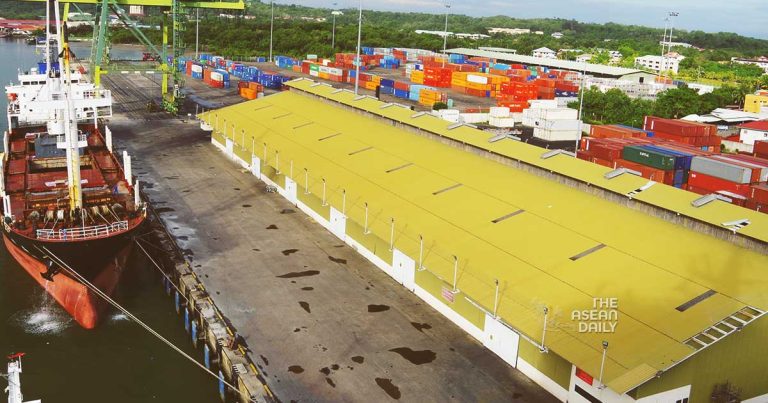13-8-2023 (BANDAR SERI BEGAWAN) Brunei’s trade figures for April 2023 have revealed a significant decline, with total trade experiencing a staggering year-on-year decrease of 53.9 percent. The Department of Economic Planning and Statistics disclosed that the trade volume plummeted from BND3.0373 billion in April 2022 to BND1.4015 billion in April 2023. This downturn was primarily attributed to a substantial 56.2 percent drop in exports, causing the exports value to shrink from BND1.7405 billion to BND761.7 million.
Mirroring this trend, the imports value also saw a notable decrease of 50.7 percent, declining from BND1.2968 billion to BND639.8 million. The Department of Economic Planning and Statistics’ release highlighted the significant factors contributing to this decline.
The decline in exports value was chiefly driven by the export values of liquified natural gas (LNG) and other petroleum products, particularly automotive diesel fuels. The drop in LNG exports value was primarily attributed to an 11.7 percent decrease in exports volume and an 18.4 percent decrease in export price.
Examining export commodities, mineral fuels emerged as the dominant contributor to Brunei’s exports, accounting for 77 percent, followed by chemicals at 19.2 percent and machinery and transport equipment at 1.7 percent.
For April 2023, the primary import commodities were mineral fuels at 51.4 percent, followed by machinery and transport equipment at 17.0 percent, food at 10.3 percent, chemicals at 7.1 percent, and manufactured goods at 6.9 percent.
Japan led the list of main export markets in April 2023 at 21.9 percent, followed by Singapore at 19.7 percent and Australia at 14.2 percent. The prominent export commodities included crude oil, liquified natural gas (LNG), and downstream petrochemical products. On the other hand, the top import partners were the United Arab Emirates at 18.7 percent, Saudi Arabia at 18.6 percent, and Malaysia at 17.4 percent, with crude oil being the largest import commodity.
Analyzing the usage of imports, 57.3 percent served as intermediate goods for processing, followed by capital goods at 37.1 percent for business operations, and consumption goods at 5.6 percent for household use. Furthermore, the majority of trade by value, amounting to 93.5 percent, was facilitated through sea transport, followed by 4.7 percent via air transport, and 1.8 percent via land.
In comparison to March 2023, the trade scenario witnessed a month-on-month decrease of 5.4 percent, primarily attributed to a significant decline in export value by 24.1 percent.




